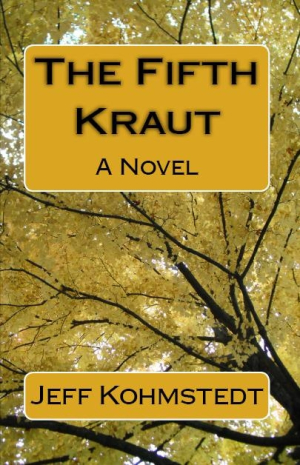
The Fifth Kraut
How much author Jeff Kohmstedt may be channeling his own high school days is never mentioned, but he presents a very relatable story of white, middle-class suburban teens of a certain era in his debut novel, The Fifth Kraut. Set outside Chicago in 1990, the coming-of-age tale follows four high school boys, friends since childhood, through their all-important senior year. Thanks to Kohmstedt’s skill at characterization and dialogue, the boys emerge from the start as distinct, identifiable individuals, each in his own way facing the overwhelming prospect of growing up. Filled with both attitude and the uncertainty it so often masks, these are real kids encountering the perils of making choices—both good and bad—and the consequences never meant so much.
The four core characters call themselves the Krauts, the distasteful name derived from their mutual German ancestry. One even pretends to a neo-Nazi style, complete with an occasional “Heil Hitler” salute, a shout out to the Fatherland, and a mention of swearing on a copy of Mein Kamf [sic]. When a fellow student declares that the Kraut name is offensive, the reply is a simple, “To who?” Another of the four displays a “gangsta wannabe façade,” looking as if “he belonged in an urban gang war rather than suburban middle-class white America.” Forever spewing “gangsta-isms” like “Yo, G … We got crank going down,” he learns his urban lingo from rap songs and idolizes a violent culture about which he knows absolutely nothing.
These kids are offensive, indiscriminately so, but they are also truly naïve in the ways of the world; the various personas they try on are based upon ignorance—anything and everything but experience. They are experimenting, both as individuals and as members of a tightly knit group, and the results are not always positive. Only when challenged by people and events that ultimately destroy their dynamic are they able, finally, to painfully move toward adulthood.
The Fifth Kraut clearly represents a very specific era, yet the characters are familiar and the story’s themes remain relevant to today’s teens. Disillusioned, angry, and hostile one moment, worrying about prom the next, the teens are as unconventional as they are typical. Admittedly, the subject matter is at times unsavory. Some readers may be offended by the characters themselves: these are sexually active teens who drink, regularly smoke pot, swear, bully, speak inappropriately, and have easy access to strippers and guns. Some readers will not recognize the numerous musical references and may even need to keep an Urban Dictionary on hand simply to understand the dialogue. Still, Kohmstedt is writing about teenagers here, and it helps to remember that they are not always particularly likable.
Inevitably, the Krauts who make it through their senior year and move on from their high school lives actually do grow up. By the story’s end, after only three months apart, the group members are already “complete strangers, void of any connection to the present and held together by a shared past.” As it happens, by this point, it is a past they would “just as soon forget,” a tough journey and an even tougher lesson, but a decidedly valid one.
Reviewed by
Cheryl M. Hibbard
Disclosure: This article is not an endorsement, but a review. The publisher of this book provided free copies of the book and paid a small fee to have their book reviewed by a professional reviewer. Foreword Reviews and Clarion Reviews make no guarantee that the publisher will receive a positive review. Foreword Magazine, Inc. is disclosing this in accordance with the Federal Trade Commission’s 16 CFR, Part 255.
